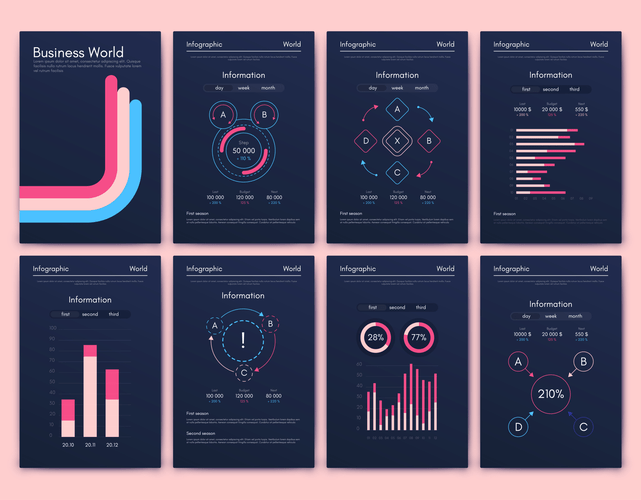The team will build functionality for the product or service, which includes creating a user interface and building the database so users can store information in your system. SDLC assists with process development, change management, user experience, and policies in addition to technical aspects of system development. An SDLC also provides for planning ahead of time, determining expenses and staffing decisions, defining goals, measuring performance, and validating points at each stage of the cycle to improve the final product’s quality.
Not just limited to purely technical activities, SDLC involves process and procedure development, change management, identifying user experiences, policy/procedure development, user impact, and proper security procedures. Books such as David Avison and Guy Fitzgerald’s Information Systems Development and Alan Daniels and Don Yeates’ Basic Systems Analysis, delve into the intricacies of information systems development lifecycles. This article will provide an in-depth analysis of the history, definition, phases, benefits, and disadvantages, along with solutions that support the system development life cycle. Because the software development lifecycle model requires the development team to complete each phase before moving on to the next, it helps ensure problems don’t become compounded during the process. Using this approach helps teams identify and deal with problems immediately.
Benefits of a Well-Defined System Development Life Cycle
Each stage is important in the development process and differs from the others in terms of complexity, assets required, and intended functionalities. In this stage, the problem or pain the software targets is clearly defined. First, developers system development lifecycle and other team members outline objectives for the system and draw a rough plan of how the system will work. Then, they may make use of predictive analysis and AI simulation tools at this stage to test the early-stage validity of an idea.
Learn what the seven stages of SDLC are and how they help developers bring new software products to life. 7 stages of the System Development Life Cycle offer a lot of benefits to development teams who use it properly. C++, PHP, and other programming languages are examples of common programming languages. It entails determining and defining the project scope in order to develop a complete action plan for the project, as well as identifying the issues that the solution will address.
Rapid application development (RAD)
Perhaps most importantly, the planning stage sets the project schedule, which can be of key importance if development is for a commercial product that must be sent to market by a certain time. Before we even begin with the planning stage, the best tip we can give you is to take time and acquire proper understanding of app development life cycle. In this guide, we’ll break down everything you need to know about the system development life cycle, including all of its stages.

An SDLC pipeline and framework can be as varied as the number of organizations adopting them—virtually every company tries to adopt a strategy that works best for their organization. The SDLC workflows may involve repeated transitions or iterations across the phases before reaching the final phase. Here, we are thinking about what the project needs, what the software needs, what the client needs, and what we need.
Container Management Platforms: Which Are Most Popular?
So without a software life cycle model, the entry and exit criteria for a stage cannot be recognized. Without software life cycle models, it becomes tough for software project managers to monitor the progress of the project. Ideally, System Analysts are highly skilled and knowledgeable in multiple operating systems, hardware configurations, programming languages, and software and hardware platforms. They are usually involved from the beginning stages of a project and up until the post-evaluation review of the solution. Famous for its iterative approach to software development that offers rapid-fire progress, Agile is a framework that fosters highly collaborative environments between all the teams involved in a project.
- When water is poured from one glass to another, in the end, if done carefully, you will still have a full glass of water without losing a drop.
- SDLC represents a multitude of complex models used in software development.
- If you’re a developer or project manager, an understanding of the most up-to-date SDLC methodologies is a powerful tool.
- Checks and balances are built into SDLC models to ensure that all software is thoroughly tested before being integrated into larger source code.
- Then, they may make use of predictive analysis and AI simulation tools at this stage to test the early-stage validity of an idea.
- Next, the appropriate technical and business stakeholders document, review, and evaluate the design specifications and choices against the risk, opportunities, practical modalities, and constraints.
- SDLC methodologies fit within a flexibility spectrum ranging from agile to iterative to sequential.
The senior members of the team perform it with inputs from all the stakeholders and domain experts or SMEs in the industry. Led by a talented group of leaders, we have a rich history and a genuine care for being more than just a technology company. When information flows seamlessly between transportation directors, administrators, drivers, and parents, school districts can deliver safer, more efficient transportation to every student. Our solutions connect every aspect of transportation management, helping districts advance their operations and make student-first decisions. Discover the industry’s leading outdoor recreation platform designed specifically for local, state, and federal agencies.
System Development Life Cycle: Design
The system specification represents the technical requirements that will provide overall guidance for system design. Because this document determines all future development, the stage cannot be completed until a conceptual design review has determined that the system specification properly addresses the motivating need. A software life cycle model describes entry and exit criteria for each phase.

Today, the traditional approaches to technology system development have been adjusted to meet the ever-changing, complex needs of each unique organization and their users. Below you will find sequential steps to SDLC, but each company will vary in their process. The system development life cycle is a project management model that defines the stages involved in bringing a project from inception to completion.
What are the Benefits of the Software Development Lifecycle?
Next, we will cover the main phases involved in the System Development Life Cycle to review what each entails. As with all stages in the system development life cycle, project management will be an important aspect of the development stage. This is the point in the life cycle in which everything and everyone needs to pull together to work towards one https://www.globalcloudteam.com/ specific goal. The development teams involved will need to be on the same page in order to stay solution-focused, and, indeed, focused on the same solution and outcomes for the project. As a leading provider of application security testing solutions, Veracode makes it easy for developers and security teams to integrate security throughout the SDLC.
Anyone who is involved in any stage of development will tell you that the most important systems start out with a good plan. Without a planning phase, it is difficult to have an idea of what needs to happen and when it needs to happen. For instance, the DevOps SDLC framework encourages Devs, Ops, and QA personnel to work together for continuous development, testing and deployment activities. Additionally, the testing procedure is shifted left and early in the SDLC pipeline so that software defects are identified before it’s too late to fix them. At this development stage, we might experience more bugs and feedback than we did at the testing stage.
Requirements analysis
Rapid application development (RAD) is a software development (or systems-development) methodology that focuses less on planning and incorporating changes on an ongoing basis. RAD focuses on quickly building a working model of the software or system, getting feedback from users, and updating the working model. After several iterations of development, a final version is developed and implemented. The systems development life cycle originally consisted of five stages instead of seven.

